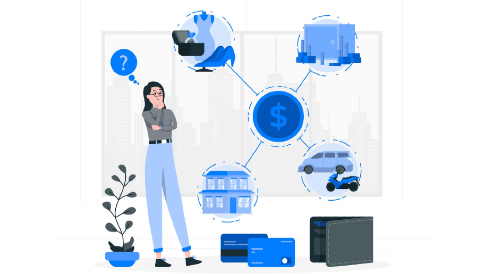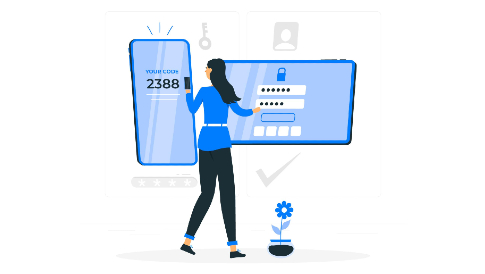Database Administration Demystified: Best Practices for Management
Database administration is crucial to keeping the fitness, performance, and safety of database offerings inside an enterprise. Effective database management includes an aggregate of proactive manipulation, strategic making plans, and technical records to ensure that databases operate correctly, reliably, and securely. In this article, we will demystify the feature of database control and discover nice practices for handling and preserving database services.
1. Comprehensive Backup and Recovery
One of the fundamental responsibilities of database directors (DBAs) is to put comprehensive backup and restoration strategies into effect to shield statistics against loss, corruption, and downtime. DBAs should frequently timetable automatic backups of databases and transaction logs, ensuring that facts are sponsored up at ordinary durations and retained for the precise duration based totally on commercial enterprise requirements and compliance guidelines. Additionally, DBAs have to conduct normal restoration checking to verify the integrity and reliability of backup documents and recovery processes, enabling agencies to restore records quickly and decrease downtime in a catastrophe or gadget failure.
2. Performance Monitoring and Tuning

Performance monitoring and tuning are essential for optimizing the database’s overall performance and ensuring an optimal consumer experience. DBAs need to proactively screen database overall performance metrics, including CPU usage, reminiscence usage, disk I/O, and query execution instances, to pick out bottlenecks, inefficiencies, and performance degradation. By leveraging monitoring equipment and overall performance dashboards, DBAs can take advantage of insights into database performance inclinations, pick out regions for optimization, and take proactive measures to cope with standard performance troubles earlier than they impact industrial business enterprise operations. Additionally, DBAs must implement performance-tuning techniques such as index optimization, question optimization, and database schema optimization to enhance database performance and responsiveness.
3. Security and Access Control
Security is paramount in database management, as databases often comprise sensitive and exclusive statistics that must be included for unauthorized right of entry, breaches, and statistics leaks. DBAs have to enforce sturdy security features and get the right of entry to controls to make sure that the simplest legal customers have to get admission to database resources and touchy records. This includes imposing sturdy password regulations, implementing function-based get entry to controls (RBAC), and encrypting facts-at-relaxation and records-in-transit to save you unauthorized access and information breaches. Additionally, DBAs need to regularly audit database access and user privileges, monitor for suspicious hobbies, and put in force compliance with protection rules and policies such as GDPR, HIPAA, and PCI DSS.
4. Patch Management and Version Control
Patching and version manipulation are important for preserving database structures’ security, stability, and reliability. DBAs need to regularly observe patches, updates, and protection fixes launched by using database companies to address recognized vulnerabilities, bugs, and security threats. This includes patch management with MDM, staying informed of the ultra-modern safety advisories and patches released by companies, checking out patches in a non-manufacturing environment earlier than deployment, and scheduling patching activities during renovation windows to reduce disruption to business operations. Additionally, DBAs must put in force version control systems to control adjustments to database schemas, configurations, and scripts, allowing them to track adjustments, roll returned to previous versions if vital, and maintain consistency across database environments.
5. Capacity Planning and Scalability
Capacity-making plans and scalability are critical for ensuring database structures can accommodate growing statistics volumes and user needs over time. DBAs should frequently assess database performance, useful resource utilization, and boom traits to forecast future capacity requirements and plan for scalability, therefore. This consists of monitoring database growth fees, reading workload patterns, and projecting resource necessities primarily based on enterprise growth projections and ancient statistics tendencies. Additionally, DBAs should put in force scalability measures such as horizontal and vertical scaling, partitioning, and sharding to distribute workload and assets effectively across more than one server or time, allowing databases to scale seamlessly to deal with increasing statistics volumes and consumer concurrency.
Best Practices for Effective Database Administration

Effective database administration is a meticulous practice. Here are some key best practices that DBAs should follow:
- Standardization and Documentation: Implementing standardized database creation, protection, and safety processes reduces mistakes and simplifies troubleshooting. Detailed documentation of database structures and procedures and the right of entry to controls is vital for future reference and information switch.
- Security First: Data protection is the pinnacle of precedence. DBAs should enforce robust access to controls, user authentication, and encryption to shield sensitive data. It is also important to regularly patch vulnerabilities and stay updated on modern protection threats.
- Performance Monitoring: Regular overall performance monitoring helps perceive capability problems earlier than they affect customers. DBAs can leverage integrated database tools and 1/3-birthday party tracking answers to song question overall performance, identify slowdowns, and optimize database strategies.
- Backup and Recovery: A strong backup and restoration plan is important for catastrophe preparedness. Regularly backing up databases to a stable, offsite region ensures statistics may be restored quickly in case of machine failures, cyberattacks, or loss of unintended records. Testing the recuperation manner periodically validates its effectiveness.
- Automation: Automation is a DBA’s first-class friend. Scripting repetitive responsibilities like database backups, consumer provisioning, and report technology saves time for more strategic activities.
- Staying Updated: The database landscape is constantly evolving. Through education, meetings, and enterprise guides, DBAs should stay current with cutting-edge database technologies, protection traits, and quality practices.
Tools of the Trade: A DBA’s Arsenal
DBAs have numerous tools at their disposal to manage and keep databases successfully. These encompass:
- Database Management Systems (DBMS): The center device, a DBMS like MySQL, Oracle, or Microsoft SQL Server, permits DBAs to create, manage, and interact with databases.
- Query Tools: Tools like SQL provide a language for interacting with databases, permitting DBAs to jot down queries to retrieve, manipulate, and analyze statistics.
- Backup and Recovery Tools: Dedicated backup and restoration software automates the backup technique and simplifies facts recovery.
- Monitoring Tools: These tools offer real-time insights into database overall performance, assisting DBAs in proactively identifying and dealing with capacity issues.
- Version Control Systems: Version manipulation systems like Git track changes made to database schema and scripts, bearing clean rollbacks and collaboration in mind.
The Evolving Role of the DBA
The role of the DBA is continuously evolving. As groups include massive data, cloud computing, and new database technologies like NoSQL databases, DBAs want to conform to their skill sets. Here’s a glimpse into the destiny:
- Cloud-Based Database Management: With the upward thrust of cloud computing, DBAs will want to understand how to manage databases hosted on cloud systems like Amazon Web Services (AWS) or Microsoft Azure.
- Big Data and Analytics: The capacity to manipulate and examine huge datasets is becoming increasingly essential. DBAs will probably collaborate with statistics scientists and analysts to ensure the best facts and accessibility for advanced analytics.
- Automation and DevOps: Automation will continue to play a significant role, and DBAs will likely combine their work with DevOps methodologies for continuous integration and delivery of database adjustments.
Empowering Developers
Database as a Service (DBaaS) Platforms
Database as a Service (DBaaS) structures offer developers a convenient and scalable way to install and manage databases inside the cloud. These structures summarize the complexities of database administration, permitting builders to recognize, construct, and optimize their applications. Popular DBaaS systems encompass Amazon RDS, Google Cloud SQL, Microsoft Azure SQL Database, and MongoDB Atlas. These structures offer managed database times with automatic backups, scaling, and monitoring functions, making it smooth for developers to provision and manage databases without demanding approximate infrastructure management.
Database Management Tools
Database administration gear offers developers intuitive interfaces for interacting with databases, writing queries, and performing administrative duties. These gear offer features, SQL query editors, schema design equipment, performance monitoring, and information visualization competencies. Examples of popular database management gear include DBeaver, MySQL Workbench, pgAdmin, and SQL Server Management Studio. This equipment streamlines database development and control responsibilities, allowing builders to paint more effectively and efficiently.
Object-Relational Mapping (ORM) Frameworks
Object-relational mapping (ORM) frameworks simplify database interplay by abstracting the underlying database form and allowing developers to create artwork with objects rather than uncooked SQL queries.ORM frameworks automatically map database tables to object instructions and offer APIs for querying, setting, updating, and deleting data. Popular ORM frameworks encompass Entity Framework (for . NET), Hibernate (for Java), SQLAlchemy (for Python), and Sequelize (for Node.Js). These frameworks streamline database access and reduce the boilerplate code required, making developers aware of software logic and commercial enterprise necessities.
Data Modeling and Design Tools
Data modeling and design equipment assist developers in designing and visualizing database schemas, relationships, and entities before enforcing them in code. This equipment permits builders to create entity-courting diagrams (ERDs), outline data kinds, and establish constraints and relationships between tables. Examples of records modeling and layout equipment encompass Lucidchart, ER/Studio, dbdiagram.Io, and Microsoft Visio. These tools facilitate collaboration between developers, database directors, and stakeholders at some stage in the database layout section, ensuring that the database schema meets the requirements of the software.
Documentation and Tutorials
Comprehensive documentation and tutorials are crucial for builders constructing programs with database services. Database providers commonly offer massive documentation, API references, and tutorials masking subjects consisting of database setup, configuration, utilization, and satisfactory practices. Additionally, online knowledge of structures, forums, and groups, including Stack Overflow, GitHub, and Reddit, offers valuable assets, tutorials, and examples for developers searching for steerage on database improvement. These assets empower developers to research new talents, troubleshoot troubles, and live up to date on contemporary trends and technology in database development.
Secrets to Success: A DBA’s Munitions Stockpile
DBAs have various apparatuses available to them to oversee and keep up with information bases successfully. These include:
- Data set Administration Frameworks (DBMS): The center instrument, a DBMS like MySQL, Prophet, or Microsoft SQL Server, permits DBAs to make, make due, and collaborate with information bases.
- Question Devices: Instruments like SQL give a language to cooperate with information bases, empowering DBAs to compose inquiries to recover, control, and break down information.
- Reinforcement and Recuperation Instruments: Committed reinforcement and recuperation programming mechanizes the reinforcement cycle and works on information reclamation.
- Checking Apparatuses: These instruments provide continuous experience in data set execution, helping DBAs recognize and resolve potential issues proactively.
- Rendition Control Frameworks: Adaptation control frameworks like Git track changes to data set mapping and scripts, considering simple rollbacks and cooperation.
The Developing Job of the DBA
The DBA’s job is continually developing. As associations embrace large information, distributed computing, and new data set advancements like NoSQL data sets, DBAs need to adjust their ranges of abilities. Here is a brief look into what’s to come:
- Cloud-Based Data Set Administration: With the ascent of distributed computing, database administration will require aptitude in overseeing data sets facilitated on cloud stages like Amazon Web Administrations (AWS) or Microsoft Purplish Blue.
- Huge Information and Investigation: The capacity to oversee and dissect enormous datasets will become increasingly significant. DBAs will probably team up with information researchers and examiners to guarantee information quality and availability for cutting-edge examinations.
- Computerization and DevOps: Mechanization will continue to play a huge part, and DBAs will probably coordinate their work with DevOps philosophies to consistently combine and convey information-base changes.
Conclusion
In the end, powerful database administration is essential for ensuring the reliability, overall performance, and protection of database services within a corporation. By following quality practices inclusive of comprehensive backup and restoration, performance monitoring and tuning, protection and getting right of entry to manage, patch control and model control, and capability-making plans and scalability, DBAs can efficaciously manipulate and maintain database services to satisfy commercial enterprise necessities and targets. As databases play a significant role in helping crucial enterprise operations and programs, professional and knowledgeable DBAs are important for ensuring organizational statistics assets’ availability, integrity, and safety.




Leave a Reply